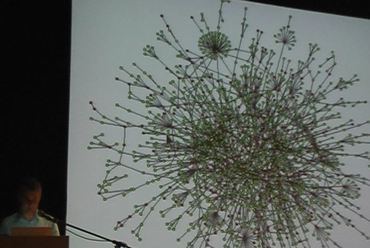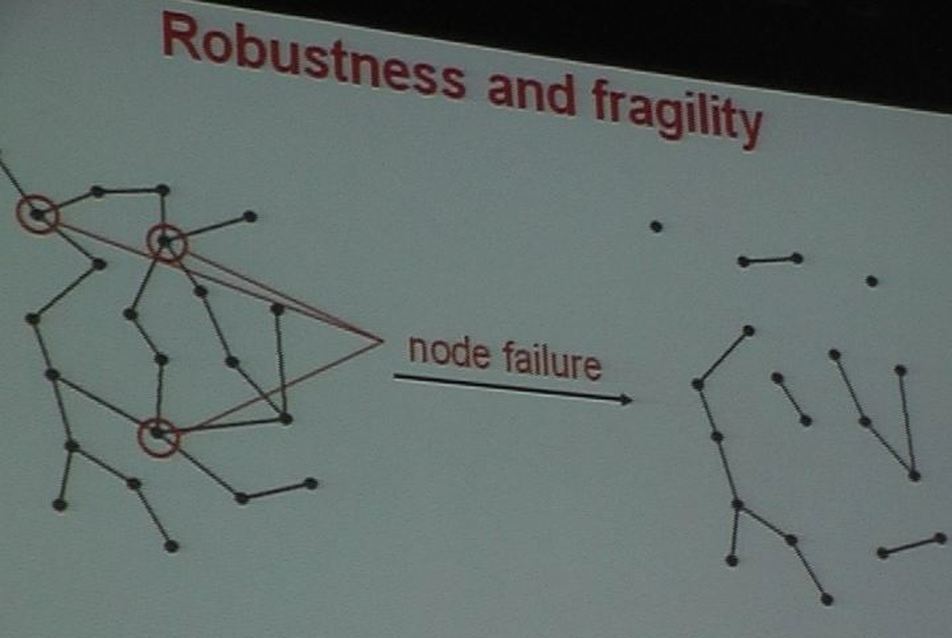
The Architecture of Complexity - Barabási Albert-László fizikus angol nyelvű előadása (video)
Barabási Albert-László angol nyelvű előadása elhangzott a prágai Mutamorphosis konferencián 2007. november 10-én. A majdnem teljes előadás anyag itt videón megnézhető. / Barabási's lecture is recorded on the Mutamorphosis Conference in Prague, on Nov 10 2007.
Mac felhasználók: Windows Media Player for Mac
Lecture abstract [Mutamorphosis, Prague Nov 10, 2007]
Systems as diverse as the World Wide Web, Internet or the cell are described by highly interconnected networks with amazingly complex topology. Recent studies indicate that these complex networks are the result of self-organizing processes governed by simple but generic laws, resulting in architectural features that are much more similar to each other than one would have expected by exploring them one by one. Indeed, how is it possible that the Internet, the cell, or the social network have the same underlying architecture? How could the router know what a gene does in our cells? My goal is to discuss this amazing and beautiful order characterizing our interconnected work, and its implications to how we perceive the impact of links and connections on our life.
Albert-László Barabási is the Distinguished University Professor of Physics at Northeastern University, and directs the Center for complex Network Research. He is also a member of the Center for Cancer Systems Biology at the Dana Farber Cancer Institute, Harvard University. Born in Transylvania, and educated in Bucharest and Budapest, he received a Ph.D. in Physics in 1994 from the Boston University. His research has lead to the discovery and understanding of scale-free networks in technology and nature, from the World Wide Web to the cell. His current research focuses on applying the concepts developed by his group for characterizing the topology of the www and the Internet to uncovering the structural and topological properties of complex metabolic and genetic networks. He is Fellow of the American Physical society, an external member of the Hungarian Academy of Sciences, and a foreign member of Academiae Europaeae. He is the recipient of the 2005 FEBS Annual Award of Systems Biology and the 2006 van Neuman Prize for Computer science. His recent general audience book entitled Linked: The New Science of Networks (Perseus, 2002) is currently available in 11 languages.























